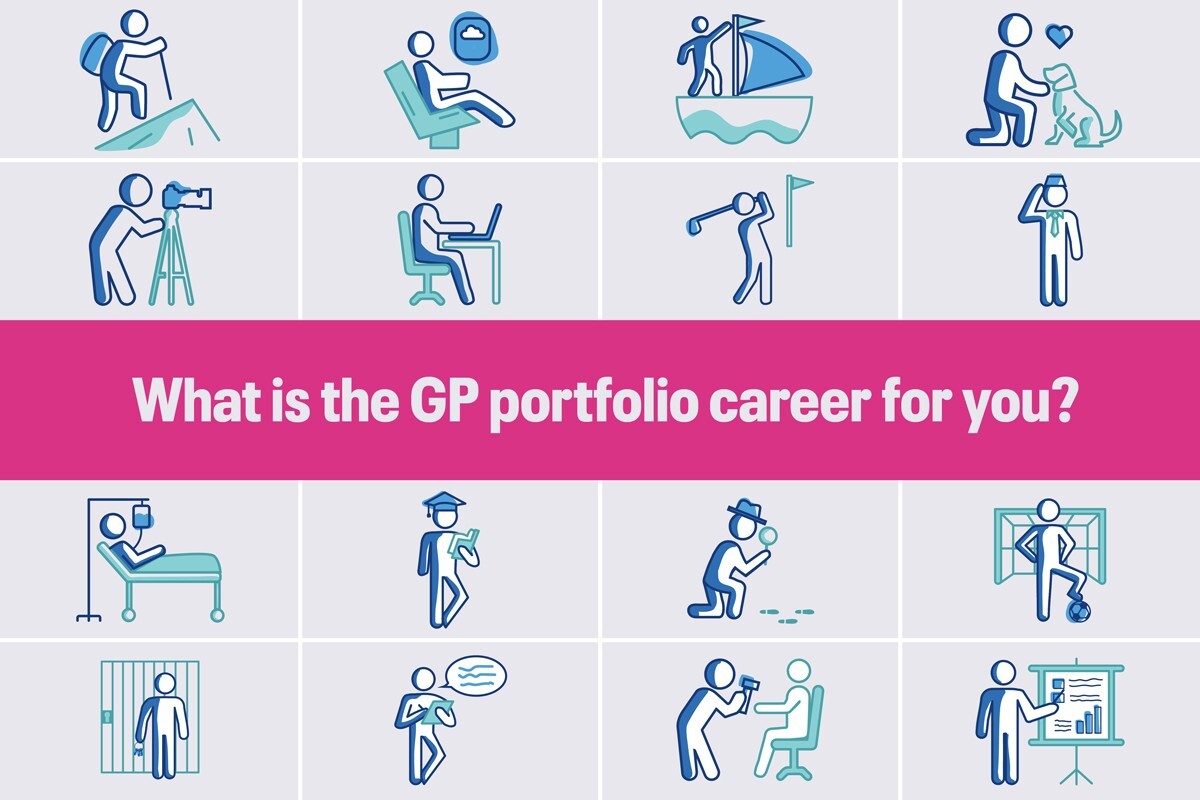Q&A: What the Leng Review means for general practice

Pulse attempts to answer the burning questions GPs will have about physician associates following the Leng Review’s publication – to the best of our current knowledge
When Professor Gillian Leng was commissioned by health secretary Wes Streeting to carry out an independent review into the role of physician associates (PAs) and anaesthesia associates (AAs) in the NHS, it was arguably one of the most unenviable jobs in healthcare policy. The debate over PAs, particularly their place in general practice, has become increasingly polarised, with concerns over safety, supervision, and substitution fuelling an – at times – toxic atmosphere.
In May, Professor Leng told the RCGP and other stakeholders that her report would bring GPs the ‘certainty’ many had been calling for. But now that the long-awaited review has landed, how much clarity does it really provide?
Overview and implementation
Will the review’s recommendations be implemented in full?
Although commissioned by the Department of Health and Social Care, the Government was under no obligation to accept the findings of Professor Leng’s review. She previously said that she had been ‘assured’ that the Government had no ‘preconceived notions’ of what conclusions she would come to, and that it wanted to accept her findings.
And that is exactly what happened. The Government accepted all the recommendations made by the Leng Review – eight of which concerned PAs (which can be found here). The DHSC has overall responsibility for implementing the recommendations set out, and the review said that these should be ‘delivered as soon as practically possible’. Following the review’s release, Mr Streeting said that the NHS in England would start work to bring in all the proposed changes ‘as quickly as possible’.
Beyond that, there is no specified deadline as to when these changes must come into force. Some will be immediate – such as the title changes and halting of PAs seeing undifferentiated patients – whereas others will need more planning and consequently need more time. This is especially true where multiple institutions and organisations will have to collaborate – for example, standards for training and credentialling will be a result of a collaboration of royal colleges.
What happens next?
NHS England sent a letter the day the review was released to PAs and AAs outlining what would happen next. The immediate changes are:
- Adoption of the new titles (physician assistants and physician assistant in anaesthesia)
- PAs working in primary care, emergency departments or other settings must not triage patients nor see undifferentiated patients
- Supervisors and managers will work with PAs to realign their roles to the activities outlined in the review, while also offering pastoral and professional support
But other changes, such as establishing credentialing, career development routes and professional standards for PAs, will need planning and infrastructure set in place.
Where do GP leaders stand?
Professor Leng herself has said her recommendations were unlikely to please everybody. And she was not wrong.
The BMA criticised the review for not recommending a national scope of practice for PA/AA roles. Council chair Dr Tom Dolphin said: ‘By failing to recommend authoritative, nationally agreed scopes of practice, Professor Leng has ignored the most urgent demand of the medical profession and left patients at the mercy of local decisions by employers who can still choose where and how assistants can work.’
The BMA’s GP Committee for Scotland called on the Scottish government to create its own scope to ’end the current post code lottery where local decision making decides what these roles can and cannot do.’
The RCGP has maintained its opposition to PAs working in general practice and said that any change to this position based on the Leng Review would need to be agreed upon by its Council – with their next meeting on 19 September. In the meantime, the college continued to refer to the guidance it previously put together limiting the scope for PAs already working in general practice. RCGP chair Professor Kamila Hawthorne said: ‘Nevertheless, recognising there already are PAs working in general practice, we developed guidance on their induction, preceptorship, supervision and scope for working in general practice.’
The Doctors’ Association UK (DAUK) criticised the review’s final recommendations, outlining its main concerns as:
- The ‘weak evidence base’ for the review’s recommendations (as acknowledged by Professor Leng herself);
- Unclear scope boundaries;
- Suggestion of adopting activities (like ordering non-ionising radiation) without the right training;
- Lack of engagement with DAUK and BMA when it submitted evidence of hundreds of safety incidents. (The review said the submissions ‘did not pass the necessary quality assessments’ because the reports were ‘unverifiable’.)
DAUK chair Matt Kneale said: ‘We support innovation that enhances patient care but these recommendations, as they stand, place workforce convenience above the paramount need for safety. We urge the Government and Royal Colleges to pause implementation and work with frontline doctors to forge a truly secure model.’
He added: ‘While Professor Leng’s report contains some welcome proposals, we are alarmed by its endorsement of role extensions that lack the necessary protections. The review has overlooked credible safety evidence that could – and should – have been independently examined.’
Impact on PAs in general practice
What does this mean for GP practices that currently employ PAs?
When Professor Leng spoke at Pulse Live Birmingham ahead of the review’s publication, she said that there was a disparity in how different GP practices used the PA role. In some practices she said that PAs were ‘doing a lot of the roles that GPs carry out’.
But the review’s recommendations means that these practices will need to change how they operate if their PAs are triaging or seeing undifferentiated patients – except within ‘clearly defined national clinical protocols’, as agreed by the RCGP and Royal College of Emergency Medicine. The rationale for this was that safety concerns raised in relation to PAs were almost always about making diagnoses and deciding initial treatment. Following the review’s recommendations, PAs should now only see undifferentiated patients when they have been triaged into adult patients with minor ailments, within the defined clinical protocols.
In terms of supervision, a named doctor should take responsibility for each PA as their formal line manager. This line manager is accountable for ensuring that the PA is trained for the role they carry out and is performing to standard. PAs should work as part of a team which has a ‘clear structure’.
Although some medical professionals wanted to see PAs removed from the primary care workforce, the review has not made this recommendation. GP practices can still employ and deploy PAs.
What does it mean for PAs?
The review concluded there was ‘no convincing reason to abolish’ either the PA or AA roles. GP groups like the BMA or RCGP may have hoped for a different outcome, given their previously stated opposition to PAs working in general practice and calls to freeze further recruitment of PAs and to phase out the role.
United Medical Associate Professionals (UMAPs) said it ‘broadly welcomes’ the findings but said recommendation 4 – that PAs should not see undifferentiated patients ‘except within clearly defined national clinical protocols’ – ‘entirely negates the benefit’ of employing PAs in general practice.
PAs wanting to become doctors could be provided a new fast-track route into the profession. The review asked the Government to ‘consider whether there should be a dedicated, fast-track training route for the current cohort of PAs and AAs who may wish to retrain as doctors’. And those wishing to remain as PAs will be given clearer career progression, with the recommendation to create an ‘advanced physician assistant’ role at one Agenda for Change band higher.
Does the BMA’s pause on recruitment still hold?
In late 2023, the BMA’s GP Committee for England called for an immediate pause on recruiting PAs in general practice and PCNs. This was due to concerns that PAs were being used as a substitute for GPs. A few months later, then-BMA council chair Professor Phil Banfield urged NHSE to pause the planned expansion of PAs in the workforce. When the Leng Review was announced in November, he echoed this sentiment saying: ‘You do not fly a plane under safety review, you ground it.’
There was no formal mandate to stop recruiting PAs while the review was being carried out. However, Professor Leng has said that she had observed ‘a definite pause’ and things had shifted during the course of the review. She attributed this – in part – to the RCGP’s scope of practice.
Following the review’s publication, BMA council chair Dr Tom Dolphin said: ‘While the diagnosis is strong, the prescription fails to meet the urgency of the moment’. Though there is nothing specific said about his predecessor’s view on PA recruitment, given his lukewarm welcome to the review one could infer that the pause still stands. GPC England has yet to comment on PA recruitment, or the review itself.
Scope, regulation and legal framework
Does this document provide the long-awaited ‘scope’ for PAs’ work?
In short, no, but the answer is slightly more convoluted. Professor Leng had not been asked to define a scope of practice for PAs, but she had been asked to assess if one may be needed.
The report acknowledged the heated debate around this topic and said that one ‘often cited’ option for addressing some of the issues raised was to set a ‘nationally defined’ scope of practice – so the need to have defined scopes of practice was ‘carefully considered during the review’.
In response to this query, Professor Leng noted that there has been ‘added clarity’ regarding training and scope of PAs following an approval process of PA courses put in place by the GMC. ‘In this context, a set scope of practice has not been proposed in the recommendations.’
The report said that Royal Colleges should work together and use any existing scopes of practice to provide ‘a guide on future training and development’, and task a new faculty with developing a new training framework. ‘This specifically includes the Royal College of General Practitioners and the Royal College of Emergency Medicine, who have an ongoing role to work with the faculty to ensure that there is clear clinical guidance on which clinical pathways are appropriate for PAs to see undifferentiated pathways,’ the review added.
The review argued that this was a ‘systematic way forward’ when it comes to defining the scope of PAs. But whilst it did not set a scope, the report set out a proposed job description for newly-qualified PAs working in primary and secondary care, which were based on their core training and informed by initial scopes of practice produced across the royal colleges, including the RCGP.
This job description for PAs in general practice severely limits their practice, by suggesting they should ‘play a central role in all aspects of preventative care, including undertaking NHS health checks and provide lifestyle support, and support the administration of basic therapeutic procedure’.
What about GMC regulation?
The GMC will still regulate PAs following the review, despite concerns raised by the BMA and campaigning groups that this could confuse patients. The review in fact excluded considerations around whether PAs and AAs should be regulated and by which body.
However, it acknowledged that ‘confusion about the role’ was said to be ‘exacerbated’ when the GMC was given the function of regulator. ‘This was perceived as creating greater alignment between PAs and the role of the doctor,’ the review added.
In response, the review recommended that the GMC should revise the text in its Good Medical Practice document to provide ‘distinct categories for PAs’ and doctors. ‘Practice should be presented separately to reinforce and clarify the differences in roles from those of doctors,’ it added. It said that this was due to the ‘lack of distinction’ between the roles being ‘central’ to the debate and that regulation ‘must not blur the line further’.
Survey responses to the review revealed ‘a range of views’ on the potential impact of GMC regulation of PAs. PAs generally expressed optimism, for example with 92% expecting a positive effect on patient safety, the review said. In contrast, only 36% of consultants and 15% of resident doctors shared this view. Following the start of regulation, PA courses have now been ‘assessed and standardised’ by the GMC, which must be seen ‘as a positive change’ according to the review.
The BMA has argued that the GMS is the wrong regulator for PAs, but in a recent high profile court case, the High Court sided with the GMC over the way it went about PA regulation. The GMC is still facing another court challenge brought on by Anaesthetists United, aiming to achieve ‘clear and enforceable guidance’ setting out what PAs ‘can and cannot do’, and arguing that the GMC has a statutory duty to set those standards.
Does the legislation need to change?
The review said that the Government should ‘immediately’ implement a name change to assistant from associate, so this ‘becomes custom and practice’ although legislative changes ‘will obviously be subject to Parliamentary time’.
It is unclear whether any other parts of recommendations will require legislative change. So far, using powers under the Health Act 1999, the Government introduced secondary legislation via the Anaesthesia Associates and Physician Associates Order 2024 to provide for the regulation of PAs and AAs by the GMC.
PAs are not legally required to register until December 2026, and this transition period was specified in legislation and designed to allow PAs to complete the ‘necessary steps’ for registration while continuing to work.
Wider impact across the NHS
What does this mean for GP practices facing legal claims based on their use of RCGP and BMA scopes of practice?
Earlier this year, GP surgeries began facing legal claims of discrimination from PAs based on their use of RCGP and BMA scopes of practice. Law firm Shakespeare Martineau filed four claims on behalf of PAs who they say have lost their jobs or have been ‘treated unfairly’ by GP employers who implemented ‘restrictive’ scope guidance. And Pulse previously reported that UMAPs was preparing 184 individual employment claims on behalf of PAs who were affected by the ‘discriminatory’ scope guidance from the BMA and the RCGP. Neither organisation claimed that their scopes of practice were mandatory or statutory, but they advised GP supervisors to adopt the guidance in the interests of patient safety.
Now the Leng Review has clarified that those scopes of practice should inform job descriptions for PAs and echoed the RCGP and BMA recommendations for PAs not to see undifferentiated patients. However, we still don’t know if this means the discrimination claims will be dropped and Pulse has asked United Medical Professionals Associates (UMAPs) whether there will be any changes to this following the review.
Many PAs work in A&E departments. What will be the immediate impact on A&E departments and will this cause staffing issues
Two of the review’s recommendations raise different questions for the role of PAs in A&E departments. The recommendation that newly-qualified PAs should spend at least two years in secondary care to be given a ‘grounding in the hospital environment’ before moving to primary care would boost PA numbers in A&E departments.
On the other hand, if they are unable to see most undifferentiated patients, as also recommended by Professor Leng, this would limit the activities they could able to carry out in A&E departments.
PAs already in primary care don’t need to go back to work in A&E retroactively, so the new requirement would not affect the 1,926 PAs already in primary care. But a two-year delay would likely have a knock-on effect on future additions to the PA workforce – should practices decide they want to continue to expand this.
Currently, roughly similar numbers work in primary and secondary care: 1,926 in primary care and 1,629 in secondary care, according to figures quoted in the review.
Will other frontline workers in primary care be subjected to similar scrutiny (e.g. ANPs, pharmacists, paramedics)? If not, why not?
This was not addressed in the review, although it did include non-peer reviewed research scrutinising ANPs and pharmacists in relation to PAs. One study found patient satisfaction was higher with ANP appointments than PA appointments over a six-month period. Another found a higher rate of complaints for PA roles compared with clinical pharmacists.
At Pulse Live Birmingham, Professor Leng herself suggested that the level of scrutiny aimed at PAs is unprecedented and potentially disproportionate.
‘I don’t think anywhere, anyone else around the world has looked so comprehensively for information about one particular staff group, and I have to say, I don’t think any other staff group has had this level of scrutiny. It would be interesting to see what happens to other professionals if we try to find data on their safety and effectiveness. It’s quite unusual to have this level of scrutiny,’ she told our audience.
Portfolio careers
What is the right portfolio career for you?

Related Articles
READERS' COMMENTS [1]
Please note, only GPs are permitted to add comments to articles













The last bit, comparing PAs to ANPs, Pharmacists, Paramedics : It is important to note that the training and the roles undertaken in GP for these varieties are different : ANPs typically have considerably longer training including a full basis in Nursing, and with a Nursing perspective; Pharmacists have a full basic training in Pharmacy, which includes anatomy/physiology, etc as well, and tend to be used more for medicines reviews and adjustments, rather than diagnosis beyond the minor issues that can present to community pharmecies; Paramedics have longer training too, by the time they get to Practices, including significant experience in triaging specifically.